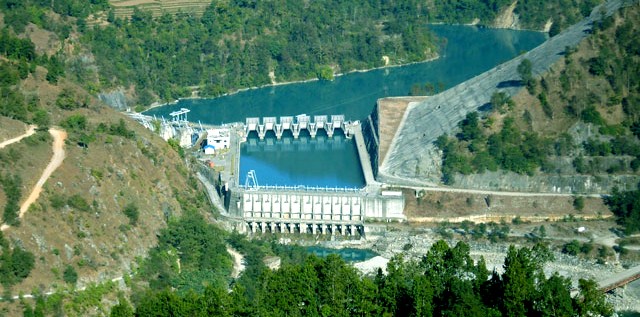200 clients consume 21 per cent of power generated in the country in winter
Kathmandu, January 19
A total of 200 institutional clients of Nepal Electricity Authority are getting uninterrupted supply of electricity through dedicated feeder lines, while rest of the population has to live with erratic power supply every day.
These institutional clients are consuming 97.43 mega volt-ampere, or approximately 73 megawatts to 97.43 MW, of electricity.
This is almost 21 per cent to 28 per cent of the total hydro-electricity generating capacity of the country during dry, or winter, season.
Nepal’s installed capacity of hydro-electricity stands at around 762 MW during rainy season.
In winter, power generation capacity falls to around 350 MW because most of the electricity in the country is produced through run-of-the-river projects.
The production capacity of run-of-the-river projects falls as the water level in the river dips.
So, to meet the shortfall, the country, this winter, is importing around 250 MW of electricity from India.
If power being consumed by institutional clients, who have access to dedicated feeder lines, is diverted through ordinary feeder lines, load-shedding, which stands at over 14 hours per day in the country, could be reduced by up to an hour every day, according to NEA officials.
Although NEA, which has a total of 2.8 million clients, refrained from providing the list of institutional clients, who are enjoying uninterrupted power supply, the state-owned power utility said it was not possible to pull the plug on all the dedicated feeder lines because some of the clients are categorised as essential service providers or very important persons.
“For instance, we cannot disconnect dedicated feeder lines extended to residence of the President or the prime minister.
Source: NEA
Also, dedicated service provided to Singha Durbar, where most of the ministries are located, cannot be terminated.
The same with Tribhuvan International Airport and hospitals,” said Bhuwan Chhetri, chief of the Load Dispatch Centre at NEA.
These clients, according to Chhetri, are getting uninterrupted power supply.
There are other clients who have access to dedicated feeder lines, but do not get round-the-clock power supply.
“For instance, Patan Industrial Estate gets uninterrupted power supply from 7:00am till 5:00pm. This means those who have dedicated feeder connection also have to face load-shedding,” Chhetri said. “This is the same with other industrial estates located in Balaju, Bhaktapur, Hetauda and Butwal.”
However, NEA officials acknowledge that round-the-clock power supply being extended to profit-making hospitals can be terminated and diverted to ordinary feeder lines.
They also say decisions made in the past to provide limited hours of uninterrupted power supply to some of the manufacturing units can be reviewed.
NEA data show Kathmandu has the highest number of clients with dedicated feeder lines, followed by Hetauda.






